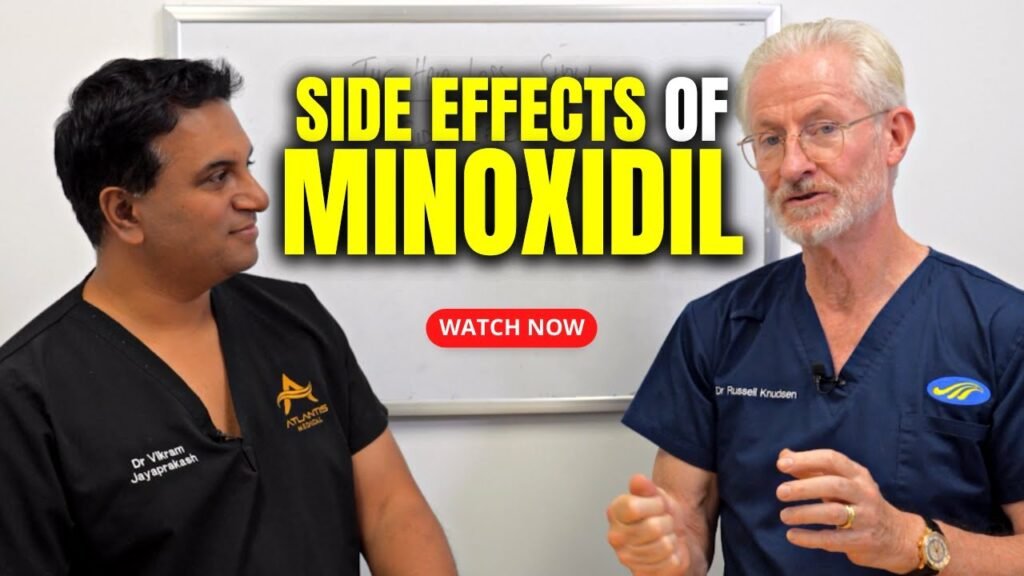Understanding Minoxidil: What It Is and How It Works
Minoxidil is a widely recognized topical treatment primarily used to address hair loss and stimulate hair growth. Originally developed as an oral medication for high blood pressure, it was discovered that one of the side effects was unexpected hair growth. This discovery led to the development of a topical solution specifically targeting hair loss. Minoxidil is now available in various forms, including foams and solutions, typically in concentrations of 2% and 5%. It is marketed under several brand names, with Rogaine being one of the most well-known.
How Minoxidil Works
The exact mechanism by which minoxidil promotes hair growth is not entirely understood, but it is believed to work by partially enlarging hair follicles and extending the growth phase of the hair cycle. This process, known as anagen phase prolongation, allows hair to grow longer and thicker. Minoxidil is thought to improve blood flow to the scalp, which may also contribute to its ability to stimulate hair growth. Increased blood circulation ensures that hair follicles receive the nutrients and oxygen they need to thrive, potentially reversing the miniaturization process associated with androgenetic alopecia, a common form of hair loss.
Application and Usage
For those considering minoxidil, its essential to apply it consistently to achieve optimal results. The treatment is typically applied directly to the scalp twice a day. Users should ensure that the scalp is dry before application and should avoid washing their hair immediately after use to allow the product to absorb fully. Consistency and patience are key, as it can take several months to see visible improvements. While minoxidil can be an effective treatment for many individuals, it is most effective in the early stages of hair loss and may not work for everyone.
Common Side Effects of Minoxidil: Can It Cause Rashes?
Minoxidil is a popular topical treatment primarily used for stimulating hair growth in conditions like androgenetic alopecia. While it is generally well-tolerated, some users may experience side effects. One of the questions often raised is whether minoxidil can cause skin rashes. Indeed, some individuals may develop skin irritations, including rashes, due to minoxidil application. This reaction can be attributed to the formulations alcohol or propylene glycol, which are common ingredients in minoxidil solutions and can irritate sensitive skin.
Understanding Skin Reactions
Skin reactions to minoxidil can vary from mild to severe. Mild reactions may include redness, itching, or a slight burning sensation at the application site. In some cases, these symptoms may subside as the skin adjusts to the treatment. However, if the irritation persists or worsens, it could lead to more noticeable rashes or dermatitis. Severe skin reactions may require discontinuation of the product and consultation with a healthcare professional. Its essential for users to monitor their skin closely after starting minoxidil to ensure any adverse effects are promptly addressed.
Minimizing the Risk of Rashes
To minimize the risk of developing rashes from minoxidil, users can take certain precautions. Performing a patch test before full application can help determine skin sensitivity to the product. If a rash develops, switching to a minoxidil foam, which typically contains fewer irritants like propylene glycol, may reduce the likelihood of irritation. Additionally, applying a moisturizer after minoxidil can help soothe and protect the skin barrier. Users should always follow the application instructions and consult a healthcare provider if they experience persistent or severe skin reactions.
Identifying Rashes: Symptoms and When to Seek Medical Advice
Understanding the symptoms of various skin rashes is crucial in determining their severity and the need for medical attention. Rashes can manifest as red patches, blisters, or bumps, and they may be accompanied by itching, swelling, or pain. Common symptoms to watch for include redness, warmth in the affected area, and changes in skin texture. Some rashes may also lead to peeling or flaking of the skin. While these symptoms are often mild, their persistence or worsening can be a sign of underlying health issues that require professional evaluation.
When to Seek Medical Advice
Knowing when to consult a healthcare provider is essential for managing skin rashes effectively. It is advisable to seek medical advice if the rash is widespread, persistent, or accompanied by other concerning symptoms such as fever, difficulty breathing, or joint pain. Immediate medical attention is necessary if the rash is accompanied by signs of an allergic reaction, such as swelling of the face or throat. Additionally, if the rash shows signs of infection, such as pus, oozing, or a red streak, it is important to see a doctor promptly to prevent further complications.
Special Considerations for Certain Rashes
Certain types of rashes, like those resulting from autoimmune conditions or infections, require specific medical interventions. For instance, if a rash appears suddenly and is accompanied by high fever or if it develops after starting a new medication, it is crucial to contact a healthcare provider immediately. Moreover, if the rash is painful or affects sensitive areas such as the eyes or genitals, professional evaluation is recommended to determine the appropriate treatment. Understanding these indicators can help in making informed decisions about when to seek medical care.
Managing and Preventing Rashes from Minoxidil Use
Minoxidil, commonly used for hair regrowth, can sometimes cause skin irritation, leading to rashes. To effectively manage these rashes, its crucial to identify and address the symptoms early. Immediate action can prevent the rash from worsening. Start by discontinuing the use of minoxidil as soon as you notice any irritation. Cleanse the affected area gently with mild soap and lukewarm water to remove any residual product. Applying a soothing moisturizer or an over-the-counter hydrocortisone cream can help alleviate itching and redness.
To prevent rashes from developing in the first place, its important to apply minoxidil correctly. Always follow the instructions provided with the product. Use the recommended amount and avoid contact with sensitive areas such as the eyes or mouth. Conduct a patch test before full application to determine any adverse reactions. This involves applying a small amount of the product to a discreet area of skin and waiting 24 hours to observe any reactions.
Choosing the right formulation of minoxidil can also play a significant role in preventing skin rashes. Minoxidil is available in various formulations, including liquid and foam. Some individuals may find that the foam formulation is less irritating than the liquid, as it contains fewer alcohol-based ingredients. Additionally, if you have sensitive skin, consider consulting with a dermatologist before starting minoxidil to ensure its suitable for your skin type. By taking these precautions, you can minimize the risk of developing rashes and continue to benefit from the hair regrowth properties of minoxidil.
Alternative Treatments: Options Beyond Minoxidil for Hair Growth
For those seeking alternatives to Minoxidil for hair growth, a variety of natural and medical treatments are available that can help stimulate hair follicles and improve scalp health. One popular option is low-level laser therapy (LLLT), which uses light energy to promote hair growth. This non-invasive treatment enhances cellular activity within hair follicles, potentially increasing hair density and thickness over time. LLLT devices, such as laser caps and combs, have become accessible for home use, offering a convenient option for those looking to supplement their hair growth regimen.
Another promising alternative is the use of natural supplements and herbal remedies. Ingredients like saw palmetto, biotin, and marine collagen are commonly found in hair growth supplements and are believed to support hair health by improving follicle strength and providing essential nutrients. Additionally, essential oils such as rosemary and peppermint have shown potential in stimulating hair growth when massaged into the scalp, possibly due to their ability to increase blood circulation and provide a soothing effect.
For individuals interested in a more scientific approach, platelet-rich plasma (PRP) therapy offers a cutting-edge solution. This treatment involves extracting a small amount of the patients blood, processing it to concentrate the platelets, and injecting it into the scalp. The growth factors in PRP are thought to rejuvenate hair follicles and encourage hair regrowth. While PRP therapy is typically performed in a clinical setting, it has gained popularity for its potential to produce noticeable results without the need for surgery or medication.


